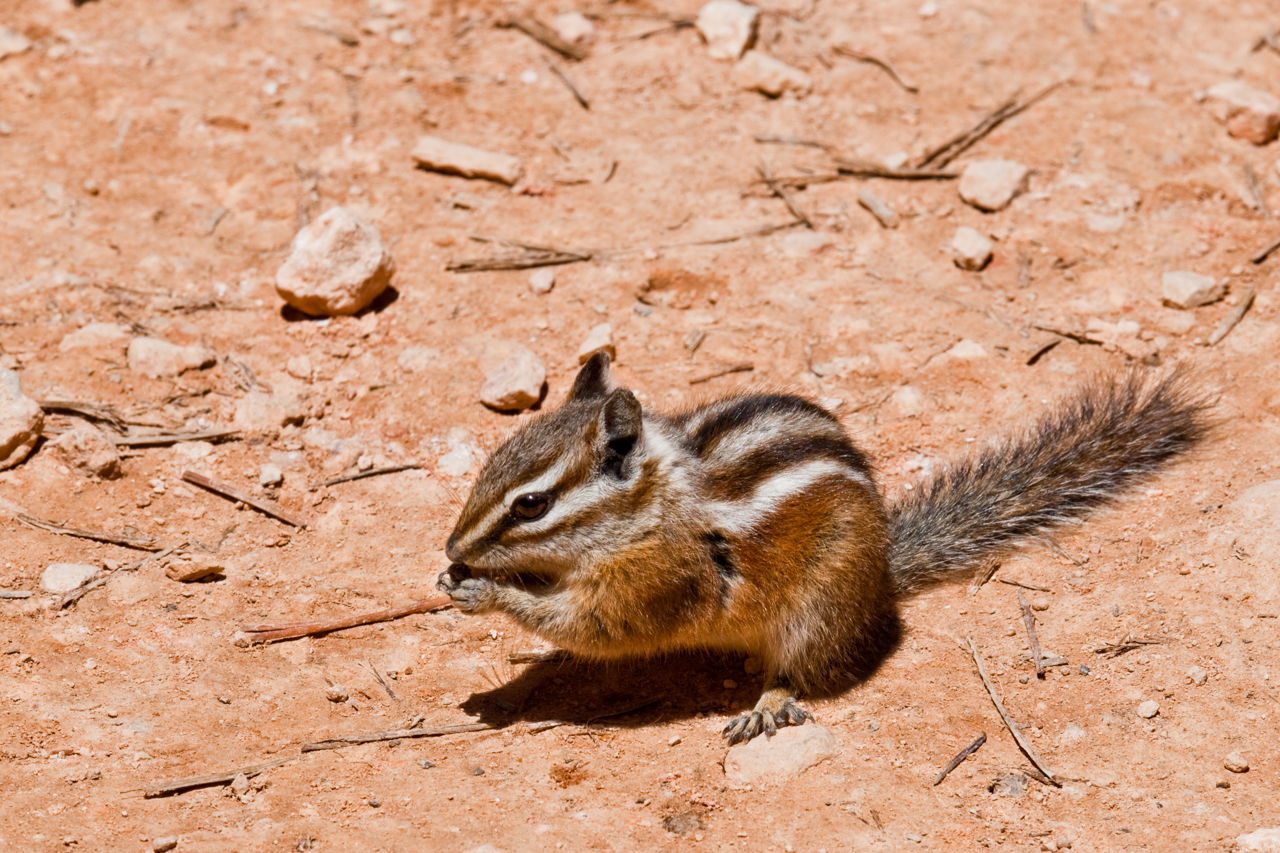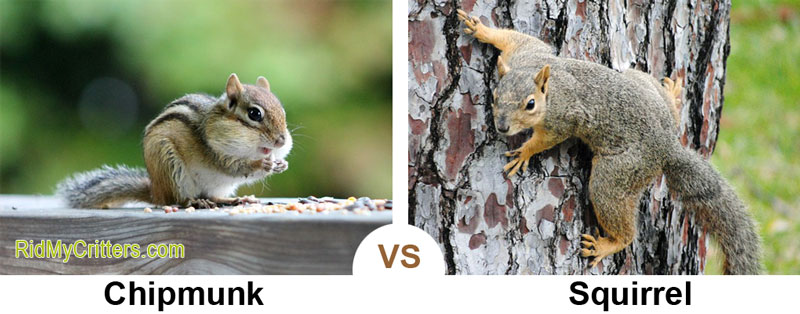
Populations of chipmunks average between 2 and 4 animals per acre. Chipmunks are most active during the early morning and late afternoon. The average territory of a chipmunk is about 1/4 to 1/2 acre, but the adult usually only defends an area about fifty feet around the burrow entrance.
Ground squirrel vs chipmunk full#
Young appear for the first time above ground when they are 2/3 full size. The young are sexually mature within one year. Two to five young are born in the spring (e.g., early May ) and during August – October. Mating occurs two times a year: during early spring and again during the summer or early fall. Burrow systems normally include a nesting chamber, one or two food storage chambers, various side pockets connecting to the main tunnel, and separate escape tunnels.Ĭhipmunks are generally solitary and protect their territories except during courtship, or when the young are developing. In most cases, the chipmunk’s main tunnel is between 20 and 30 feet in length, but complex burrow systems occur where cover is sparse. There are no obvious mounds around the burrow entrance because the chipmunk carries the dirt in its cheek pouches and scatters it on the ground away from the burrow to make the burrow entrance less conspicuous. The burrow entrance is usually about 2 inches in diameter. The burrows of chipmunks often are well-hidden near buildings (such as basements and garages), gardens, stumps, woodpiles or brushpiles. Chipmunks cache food in their burrows throughout the year. The diet of chipmunks consists of various kinds of nuts, berries and seeds, but they also eat mushrooms, insects and carrion. 13-lined Ground Squirrel, Spermophilus tridecemlineatus When startled a ground squirrel carries the tail horizontally along the ground the chipmunk carries the tail upright.įig. And, as this squirrel’s name implies, it possesses 13 stripes extending from the shoulder to the tail on each side and back. The thirteen-lined ground squirrel is yellowish, lacks the facial stripes, and the tail is not as bushy as the chipmunk’s. Sometimes the chipmunk is confused with another ground squirrel, the thirteen-lined ground squirrel (also called “striped gopher”). The rump is reddish brown the tail is 3-4 inches long and is hairy. The eastern chipmunk is a small brownish grounddwelling squirrel 5-6 inches long, with two pale and five blackish longitudinal stripes on its back, and two pale and two brownish stripes on each side of the face. They may also be destructive to gardens when they dig up and eat bulbs and seeds or attack garden fruits.

The burrowing activity of chipmunks can cause significant structural damage by undermining foundations, concrete patios and steps, retaining walls and sidewalks. Moreover, their food habits influence the growth of various plants.īut chipmunks can also be serious destructive pests when they become numerous around homes and gardens. Chipmunks prey upon various insects, and the chipmunks themselves serve as prey for various predators. They are also a part of the food chain in the wildlife community. They are cute little mammals whose antics often make us laugh. Around residences, they sometimes use downspouts and overhanging trees to gain access to rooftops. Although they are mostly burrowing rodents, they regularly climb oak trees in the fall to gather acorns.

Chipmunks are usually found in mature woodlands and woodlot edges, but they also inhabit areas in and around suburban and rural homes such as around ornamental plantings, rockpiles, outbuildings and below patios and building foundations. The eastern chipmunk ( Tamias striatus), is a member of the squirrel family and is common throughout Indiana and the eastern United States.

Photo by: Bill Hubick, Cromwell Valley Park


 0 kommentar(er)
0 kommentar(er)
